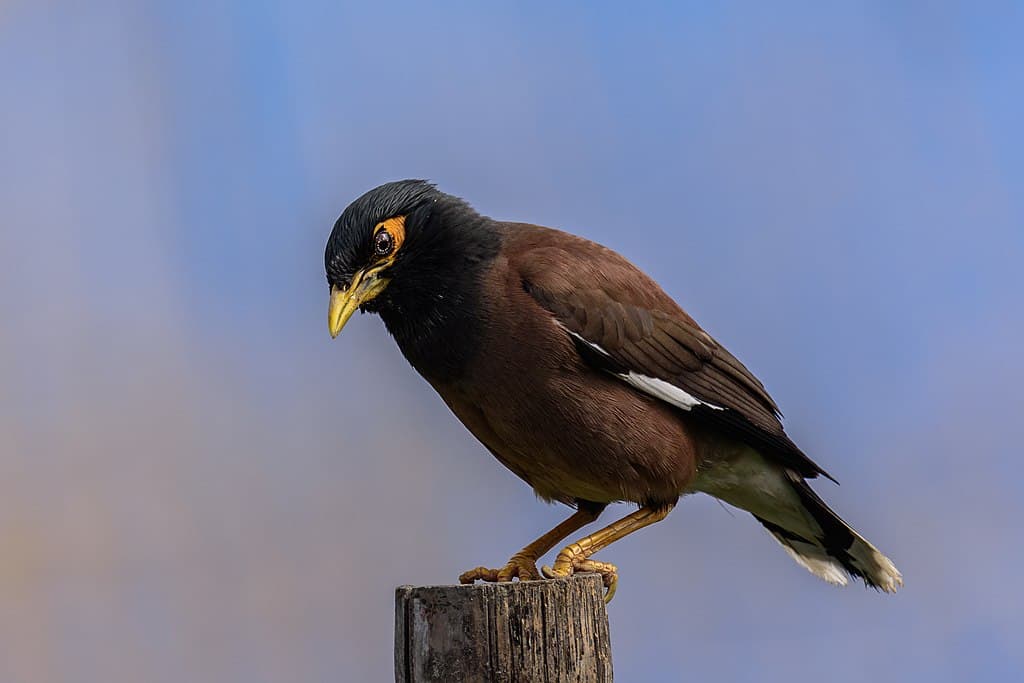Gracula Religiosa aka common hill myna is one of the most common pet birds in Cambodia because of its special abilities. These songbirds are able to mimic not only sounds but also words which is quite fascinating among people. Many bird lovers prefer common hill myna to parrots because of their better talking skills. There are many things about these birds that you probably don’t know about, so let’s dig deeper.
Appearance
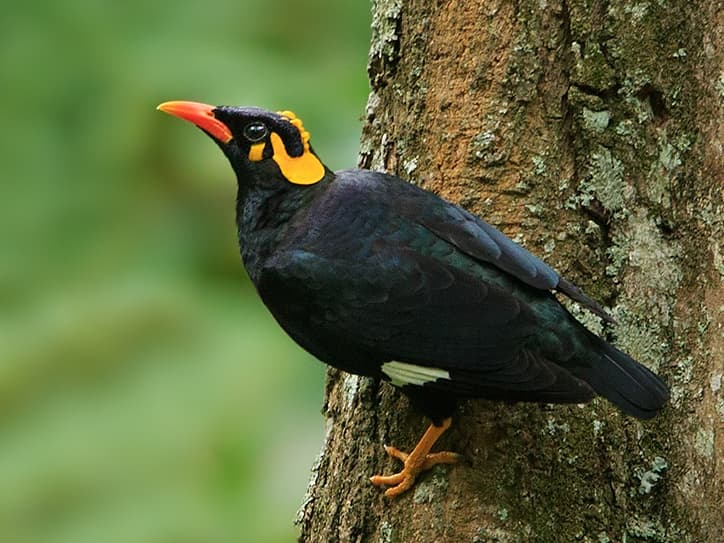
As small to medium birds, they can only grow up to 30 centimeters. A common hill myna has a glossy black plumage with bright orange-yellow patches of naked skin on its head and nape. If you look closer, you can also see that the bird is not all black. The plumage is green-glossed with a purple tinge on the head and neck. There are also white patches on the wings but only visible in flight. This bird has strong bill and legs, and they are bright yellow in color.
Behavior
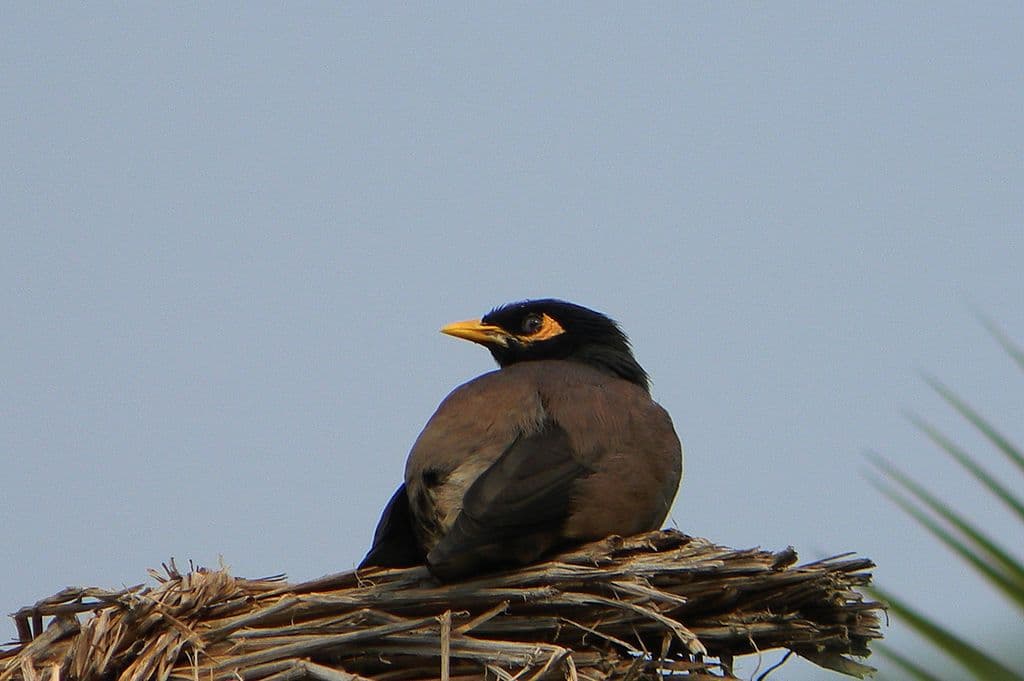
One of the most noticeable things about these talking birds is the loud shrill and descending whistles and other calls. Both male and female common hill mynas can produce not only loud calls but also gurgles, screeches, wails, and whistles. The best part is the human everyday sounds and words that they often hear, the annunciation is so human-like. Common hill mynas are the most vocal at dawn and dusk when they hang out in small groups among tree canopies.
Another interesting part about them is that they are monogamous, and the couples are still together even during the non-breeding season. Several pairs may nest in one tree without territorial aggression in large groups. However, they live in pairs with their mates during the breeding season. These birds can be aggressive toward humans if we bother them from building their nests. When attacking, common hill mynas can be so fierce they leave serious cuts from their beaks and feet.
Feeding & Habitats
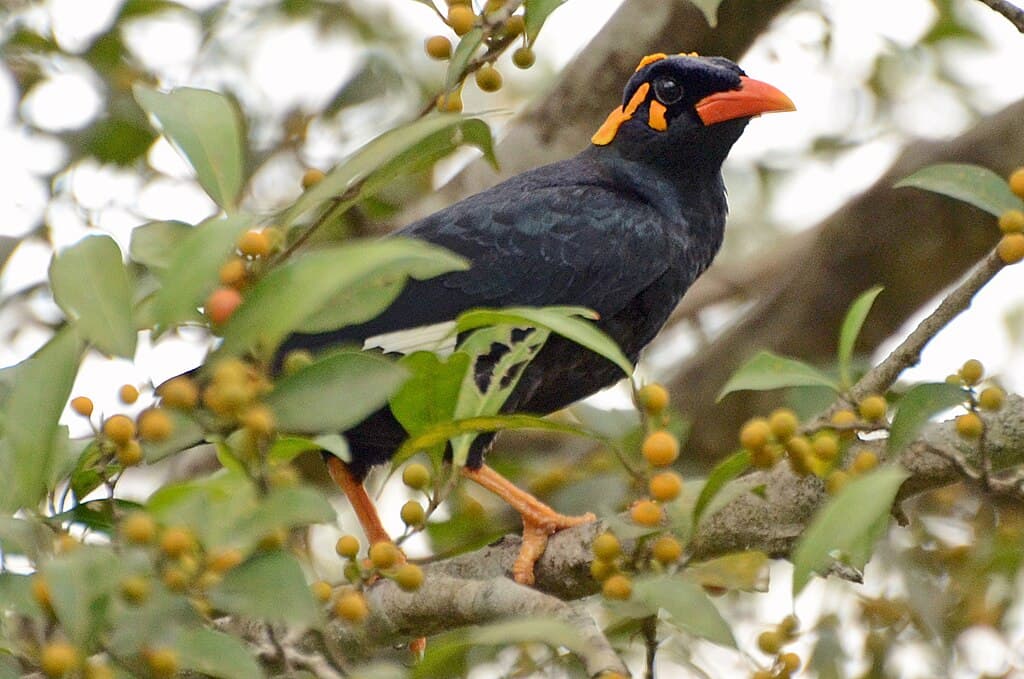
As arboreal frugivores, these songbirds feed on fruits, insects, and nectar that they can find. The insects are normally from trees, and common hill mynas also catch winged termites in the air as well. They like figs as well as berries and seeds from a variety of shrubs and trees.
Common hill mynahs move in large groups of half a dozen or more, and they are very loud and noisy together. They prefer areas where rainfall and humidity are both high, mainly in evergreen, jungles, semi-evergreen forests, and wet deciduous forests. These birds are also common at clearings, cultivated areas like coffee plantations, forest edges, hills, and thinned areas as well.
Predators & Threats
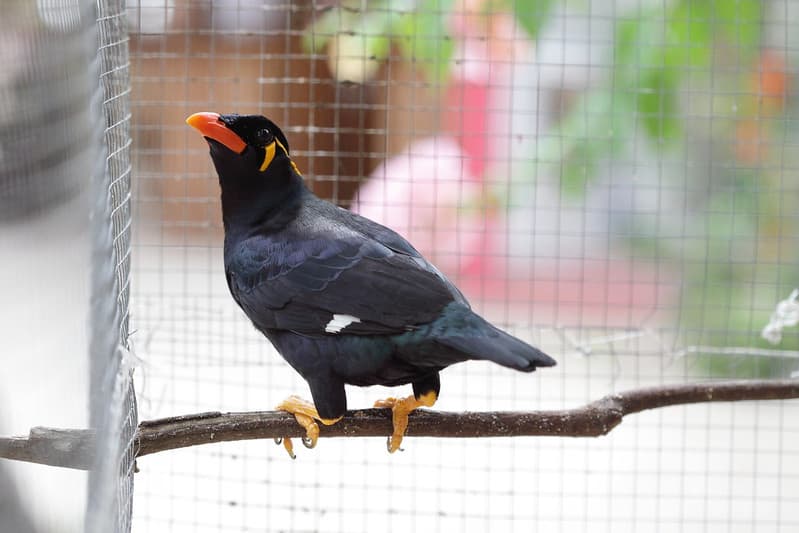
Flying in large flocks help protect them from predators, but not all the time. Some of the predators that they cannot avoid are crows, mongooses, and pet cats. They either prey on common hill mynas’ eggs or chicks, and some people even catch the adult birds and eat them. Another thing is that they are subject to parasites such as mites and tapeworms. This is why they take ant baths to prevent the parasites from harming them.
Their ability to imitate speech makes them popular cage birds; and their main threat is the pet trade. Hundreds or even thousands of common hill mynas are very popular in aviculture. In countries such as India, Laos, and the Philippines, fledged common hill mynas are captured for the illegal pet trade. Along with those, forest destruction and habitat loss also play a part in their population decline though they are abundant.
Related Post: Things You Don’t Know About Greater Adjutant
